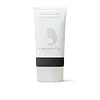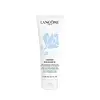What's inside
What's inside
 Key Ingredients
Key Ingredients

 Benefits
Benefits

 Concerns
Concerns

 Ingredients Side-by-side
Ingredients Side-by-side

Water
Skin ConditioningCaprylic/Capric Triglyceride
MaskingCetearyl Ethylhexanoate
EmollientCetearyl Alcohol
EmollientButyrospermum Parkii Butter
Skin ConditioningStearic Acid
CleansingSilt
AbsorbentGlycerin
HumectantCetearyl Olivate
Gluconolactone
Skin ConditioningSorbitan Olivate
EmulsifyingZinc Oxide
Cosmetic ColorantSaccharomyces/Grape Ferment Extract
Skin ConditioningPhenoxyethanol
PreservativeCamphor
MaskingEucalyptus Globulus Leaf Oil
PerfumingLactic Acid
BufferingGlycolic Acid
BufferingCitric Acid
BufferingParfum
MaskingMentha Piperita Oil
MaskingXanthan Gum
EmulsifyingBenzoic Acid
MaskingTocopherol
AntioxidantPhospholipids
Skin ConditioningDehydroacetic Acid
PreservativeMalic Acid
BufferingPhytic Acid
Tartaric Acid
BufferingEthylhexylglycerin
Skin ConditioningLeuconostoc/Radish Root Ferment Filtrate
AntimicrobialCitrus Medica Limonum Fruit Extract
Skin ConditioningPyrus Malus Fruit Extract
Skin ConditioningSaccharum Officinarum Extract
MoisturisingVaccinium Myrtillus Fruit Extract
Skin ConditioningVitis Vinifera Fruit Extract
Skin ConditioningLimonene
PerfumingLinalool
PerfumingWater, Caprylic/Capric Triglyceride, Cetearyl Ethylhexanoate, Cetearyl Alcohol, Butyrospermum Parkii Butter, Stearic Acid, Silt, Glycerin, Cetearyl Olivate, Gluconolactone, Sorbitan Olivate, Zinc Oxide, Saccharomyces/Grape Ferment Extract, Phenoxyethanol, Camphor, Eucalyptus Globulus Leaf Oil, Lactic Acid, Glycolic Acid, Citric Acid, Parfum, Mentha Piperita Oil, Xanthan Gum, Benzoic Acid, Tocopherol, Phospholipids, Dehydroacetic Acid, Malic Acid, Phytic Acid, Tartaric Acid, Ethylhexylglycerin, Leuconostoc/Radish Root Ferment Filtrate, Citrus Medica Limonum Fruit Extract, Pyrus Malus Fruit Extract, Saccharum Officinarum Extract, Vaccinium Myrtillus Fruit Extract, Vitis Vinifera Fruit Extract, Limonene, Linalool
Glycerin
HumectantWater
Skin ConditioningMyristic Acid
CleansingStearic Acid
CleansingPotassium Hydroxide
BufferingPalmitic Acid
EmollientGlyceryl Stearate Se
EmulsifyingLauric Acid
CleansingCoco-Glucoside
CleansingGlycol Distearate
EmollientParfum
MaskingP-Anisic Acid
MaskingTocopherol
AntioxidantPEG-14m
Emulsion StabilisingNelumbo Nucifera Flower Extract
Skin ConditioningLimonene
PerfumingBenzyl Salicylate
PerfumingBenzyl Alcohol
PerfumingLinalool
PerfumingDisodium EDTA
Rosa Gallica Flower Extract
AstringentButylphenyl Methylpropional
PerfumingCryptomeria Japonica Bud Extract
Skin ConditioningGlycerin, Water, Myristic Acid, Stearic Acid, Potassium Hydroxide, Palmitic Acid, Glyceryl Stearate Se, Lauric Acid, Coco-Glucoside, Glycol Distearate, Parfum, P-Anisic Acid, Tocopherol, PEG-14m, Nelumbo Nucifera Flower Extract, Limonene, Benzyl Salicylate, Benzyl Alcohol, Linalool, Disodium EDTA, Rosa Gallica Flower Extract, Butylphenyl Methylpropional, Cryptomeria Japonica Bud Extract
 Reviews
Reviews

Ingredients Explained
These ingredients are found in both products.
Ingredients higher up in an ingredient list are typically present in a larger amount.
Glycerin is already naturally found in your skin. It helps moisturize and protect your skin.
A study from 2016 found glycerin to be more effective as a humectant than AHAs and hyaluronic acid.
As a humectant, it helps the skin stay hydrated by pulling moisture to your skin. The low molecular weight of glycerin allows it to pull moisture into the deeper layers of your skin.
Hydrated skin improves your skin barrier; Your skin barrier helps protect against irritants and bacteria.
Glycerin has also been found to have antimicrobial and antiviral properties. Due to these properties, glycerin is often used in wound and burn treatments.
In cosmetics, glycerin is usually derived from plants such as soybean or palm. However, it can also be sourced from animals, such as tallow or animal fat.
This ingredient is organic, colorless, odorless, and non-toxic.
Glycerin is the name for this ingredient in American English. British English uses Glycerol/Glycerine.
Learn more about GlycerinLimonene is a fragrance that adds scent and taste to a formulation.
It's found in the peel oil of citrus fruits and other plants such as lavender and eucalyptus. The scent of limonene is generally described as "sweet citrus".
Limonene acts as an antioxidant, meaning it helps neutralize free radicals.
When exposed to air, oxidized limonene may sensitize the skin. Because of this, limonene is often avoided by people with sensitive skin.
The term 'fragrance' is not regulated in many countries. In many cases, it is up to the brand to define this term. For instance, many brands choose to label themselves as "fragrance-free" because they are not using synthetic fragrances. However, their products may still contain ingredients such as essential oils that are considered a fragrance.
Learn more about LimoneneLinalool is a fragrance and helps add scent to products. It's derived from common plants such as cinnamon, mint, citrus, and lavender.
Like Limonene, this ingredient oxidizes when exposed to air. Oxidized linalool can cause allergies and skin sensitivity.
This ingredient has a scent that is floral, spicy tropical, and citrus-like.
Learn more about LinaloolParfum is a catch-all term for an ingredient or more that is used to give a scent to products.
Also called "fragrance", this ingredient can be a blend of hundreds of chemicals or plant oils. This means every product with "fragrance" or "parfum" in the ingredients list is a different mixture.
For instance, Habanolide is a proprietary trade name for a specific aroma chemical. When used as a fragrance ingredient in cosmetics, most aroma chemicals fall under the broad labeling category of “FRAGRANCE” or “PARFUM” according to EU and US regulations.
The term 'parfum' or 'fragrance' is not regulated in many countries. In many cases, it is up to the brand to define this term.
For instance, many brands choose to label themselves as "fragrance-free" because they are not using synthetic fragrances. However, their products may still contain ingredients such as essential oils that are considered a fragrance by INCI standards.
One example is Calendula flower extract. Calendula is an essential oil that still imparts a scent or 'fragrance'.
Depending on the blend, the ingredients in the mixture can cause allergies and sensitivities on the skin. Some ingredients that are known EU allergens include linalool and citronellol.
Parfum can also be used to mask or cover an unpleasant scent.
The bottom line is: not all fragrances/parfum/ingredients are created equally. If you are worried about fragrances, we recommend taking a closer look at an ingredient. And of course, we always recommend speaking with a professional.
Learn more about ParfumStearic Acid is a fatty acid. It is an emollient, emulsifier, and texture enhancer.
As an emollient, stearic acid helps soften skin. It aids the skin's protective barrier by preventing water loss. It also provides a gentle cleansing effect without stripping away natural oils.
Stearic acid may also be used to enhance the texture of products. It can add volume and stabilize ingredients such as water and oil. This can help water and oil ingredients from separating.
Sources of stearic acid include animal or vegetable fats/oils such as coconut or shea. It can be naturally found in butter, cocoa butter, shea butter, vegetable fats, and animal tallow.
This ingredient may not be Malassezia folliculitis, or fungal-acne safe.
Learn more about Stearic AcidTocopherol (also known as Vitamin E) is a common antioxidant used to help protect the skin from free-radicals and strengthen the skin barrier. It's also fat soluble - this means our skin is great at absorbing it.
Vitamin E also helps keep your natural skin lipids healthy. Your lipid skin barrier naturally consists of lipids, ceramides, and fatty acids. Vitamin E offers extra protection for your skin’s lipid barrier, keeping your skin healthy and nourished.
Another benefit is a bit of UV protection. Vitamin E helps reduce the damage caused by UVB rays. (It should not replace your sunscreen). Combining it with Vitamin C can decrease sunburned cells and hyperpigmentation after UV exposure.
You might have noticed Vitamin E + C often paired together. This is because it is great at stabilizing Vitamin C. Using the two together helps increase the effectiveness of both ingredients.
There are often claims that Vitamin E can reduce/prevent scarring, but these claims haven't been confirmed by scientific research.
Learn more about TocopherolWater. It's the most common cosmetic ingredient of all. You'll usually see it at the top of ingredient lists, meaning that it makes up the largest part of the product.
So why is it so popular? Water most often acts as a solvent - this means that it helps dissolve other ingredients into the formulation.
You'll also recognize water as that liquid we all need to stay alive. If you see this, drink a glass of water. Stay hydrated!
Learn more about Water